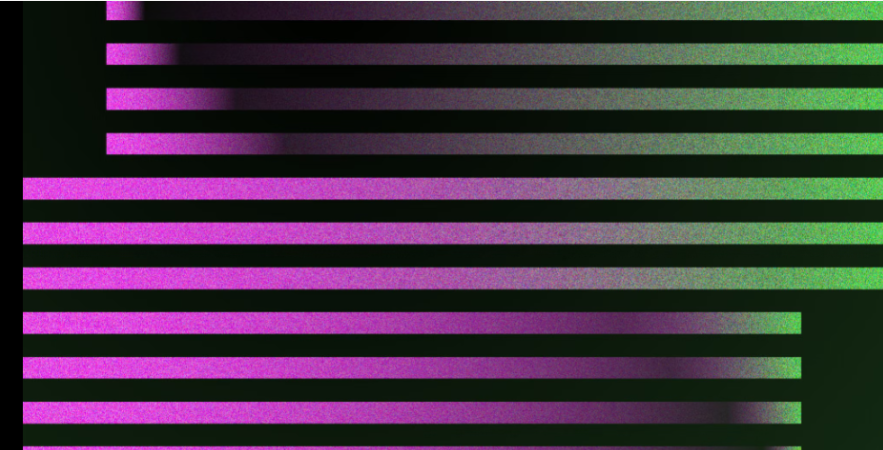UniApp 核心语法与组件学习
本文介绍了UniApp开发的基础知识,主要包括页面结构(.vue文件)、路由配置与跳转方式、数据绑定与渲染、事件处理方法、内置组件使用以及样式与布局技巧。文章详细讲解了.vue文件的组成、页面跳转的两种方式(组件和API)、数据绑定的多种语法、常见事件处理模式,以及常用组件和样式的使用方法,并提供了引入TailwindCSS等外部样式库的步骤。最后总结了2-3周学习后应掌握的核心开发技能,为开发者
·
一、页面开发基础
1. 页面结构(.vue 文件)
每个页面是一个 .vue 单文件组件,包含三部分:
<template>
<!-- 页面结构 -->
<view class="container">
<text>Hello UniApp</text>
</view>
</template>
<script>
// 逻辑部分
export default {
data() {
return {
message: '欢迎学习 UniApp'
}
}
}
</script>
<style>
/* 样式部分 */
.container {
padding: 20rpx;
}
</style>二、页面路由配置与跳转
1. 配置页面路径(pages.json)
{
"pages": [
{
"path": "pages/index/index",
"style": {
"navigationBarTitleText": "首页"
}
},
{
"path": "pages/list/list",
"style": {
"navigationBarTitleText": "列表页"
}
}
],
"globalStyle": {
"navigationBarTextStyle": "black",
"backgroundColor": "#F8F8F8"
}
}2. 页面跳转方式
✅ 方法一:使用 <navigator> 组件
<!-- 跳转到列表页 -->
<navigator url="/pages/list/list">
<button>进入列表页</button>
</navigator>
<!-- 打开新页面(不返回) -->
<navigator url="/pages/detail/detail" open-type="redirect">
<text>查看详情</text>
</navigator>✅ 方法二:编程式导航(JS API)
// 跳转并保留返回栈
uni.navigateTo({
url: '/pages/list/list?category=tech'
})
// 关闭当前页返回上一页
uni.navigateBack()
// 重定向(替换当前页面)
uni.redirectTo({
url: '/pages/user/profile'
})
// 跳转到 tabBar 页面
uni.switchTab({
url: '/pages/index/index'
})💡 支持传递参数:
url: '/path?name=jack&age=20'
三、数据绑定与渲染
1. 插值表达式 {{ }}
<template>
<view>
<text>{{ message }}</text>
<text>计算结果:{{ 2 + 3 }}</text>
<text>对象属性:{{ user.name }}</text>
</view>
</template>
<script>
export default {
data() {
return {
message: 'Hello World',
user: { name: '张三' }
}
}
}
</script>2. 属性绑定 v-bind 或 :
<image :src="logoUrl" mode="widthFix"></image>
<view :class="{ active: isActive }">动态类名</view>
<text :style="{ color: textColor }">动态样式</text>3. 列表渲染 v-for
<view v-for="(item, index) in list" :key="index">
{{ index }} - {{ item.title }}
</view>data() {
return {
list: [
{ title: '新闻1' },
{ title: '新闻2' }
]
}
}4. 条件渲染 v-if / v-else / v-show
<!-- v-if:条件成立才渲染(更彻底) -->
<view v-if="isLoggedIn">欢迎回来!</view>
<view v-else>请登录</view>
<!-- v-show:通过 display 控制显示隐藏 -->
<view v-show="loading">加载中...</view>四、事件处理
1. 事件绑定 @事件名="方法"
<button @click="handleClick">点击我</button>
<view @tap="onTap">触摸</view>
<input @input="onInput" placeholder="输入内容" />2. 方法定义
export default {
methods: {
handleClick(event) {
console.log('按钮被点击', event)
},
onTap() {
uni.showToast({ title: '点击了区域' })
},
onInput(e) {
console.log('输入内容:', e.detail.value)
}
}
}3. 事件传参
<button @click="sayHello('Jack')">打招呼</button>
<view @click="deleteItem(index)" v-for="(item, index) in list" :key="index">
{{ item.name }}
</view>methods: {
sayHello(name) {
uni.showToast({ title: `你好,${name}` })
},
deleteItem(index) {
this.list.splice(index, 1)
}
}五、内置组件使用
1. 基础组件
| 组件 | 说明 |
|---|---|
<view> |
块级容器,类似 div |
<text> |
文本容器,支持长按选中 |
<image> |
图片组件,必须设置 mode |
<button> |
按钮,支持 open-type(如获取用户信息) |
<input> |
输入框,监听 @input 事件 |
<view class="card">
<image src="/static/logo.png" mode="aspectFit"></image>
<text>应用名称</text>
<input type="text" placeholder="请输入" @input="onInput" />
<button @click="submit">提交</button>
</view>2. 表单组件
| 组件 | 说明 |
|---|---|
<form> |
表单容器,可监听 @submit |
<picker> |
选择器(时间、日期、多列等) |
<switch> |
开关选择器 |
<slider> |
滑动选择器 |
<form @submit="onSubmit">
<picker mode="date" @change="onDateChange">
<view>选择日期:{{ date }}</view>
</picker>
<switch @change="onSwitchChange" /> 是否启用
<slider @changing="onSlide" show-value /> 音量调节
<button form-type="submit">提交表单</button>
</form>data() {
return { date: '' }
},
methods: {
onDateChange(e) {
this.date = e.detail.value
},
onSwitchChange(e) {
console.log('开关状态:', e.detail.value)
},
onSlide(e) {
console.log('滑动值:', e.detail.value)
},
onSubmit(e) {
console.log('表单数据:', e.detail.value)
}
}3. 导航组件
✅ 配置 tabBar(底部导航)
在 pages.json 中配置:
{
"tabBar": {
"list": [
{
"pagePath": "pages/index/index",
"text": "首页",
"iconPath": "static/tab/home.png",
"selectedIconPath": "static/tab/home-active.png"
},
{
"pagePath": "pages/user/user",
"text": "我的",
"iconPath": "static/tab/user.png",
"selectedIconPath": "static/tab/user-active.png"
}
],
"color": "#7A7E83",
"selectedColor": "#007AFF",
"backgroundColor": "#ffffff"
}
}✅ 自定义导航栏(navigationBar)
{
"pages": [
{
"path": "pages/detail/detail",
"style": {
"navigationBarTitleText": "详情页",
"navigationStyle": "custom" // 隐藏原生导航栏
}
}
]
}自定义后需自己实现返回按钮、标题栏等 UI。
六、样式与布局
1. rpx 单位与自适应布局
- rpx(responsive pixel):小程序/UniApp 特有单位
- 规则:屏幕宽度 = 750rpx
- 换算:
- iPhone6:1rpx ≈ 0.5px
- 可自动适配不同屏幕
.container {
width: 750rpx; /* 全屏宽度 */
padding: 20rpx; /* 自适应间距 */
font-size: 32rpx; /* 文字大小 */
}2. 全局样式 vs 局部样式
- 全局样式:
uni.scss或app.vue中的<style>,影响所有页面 - 局部样式:每个
.vue文件内的<style>,仅作用于当前组件
/* uni.scss - 全局变量 */
$primary-color: #007AFF;
$text-color: #333;<!-- pages/index/index.vue -->
<style>
/* 局部样式 */
.title {
color: $primary-color; /* 可使用全局变量 */
font-size: 36rpx;
}
</style>3. 引入外部样式库(以 Tailwind CSS 为例)
✅ 步骤一:安装 Tailwind
npm install -D tailwindcss postcss autoprefixer
npx tailwindcss init✅ 步骤二:配置 tailwind.config.js
module.exports = {
content: [
"./pages/**/*.{vue,js}",
"./components/**/*.{vue,js}"
],
theme: {
extend: {},
},
plugins: [],
}✅ 步骤三:创建样式文件 tailwind.css
@tailwind base;
@tailwind components;
@tailwind utilities;✅ 步骤四:在 main.js 中引入
import './tailwind.css'✅ 使用示例
<view class="flex items-center justify-between p-4 bg-white border-b">
<text class="text-lg font-bold text-gray-800">标题栏</text>
<button class="px-3 py-1 text-sm text-blue-600 bg-blue-50 rounded-full">
按钮
</button>
</view>⚠️ 注意:部分 CSS 特性(如伪类)在小程序中受限,建议结合
@apply使用。
总结
经过 2-3 周的学习,你应该已经掌握了:
✅ 页面结构与路由跳转
✅ 数据绑定与条件/列表渲染
✅ 事件处理与传参
✅ 常用内置组件使用
✅ tabBar 与导航栏配置
✅ rpx 布局与样式管理
✅ 引入外部 UI 库(如 Tailwind)
更多推荐
 已为社区贡献3条内容
已为社区贡献3条内容







所有评论(0)